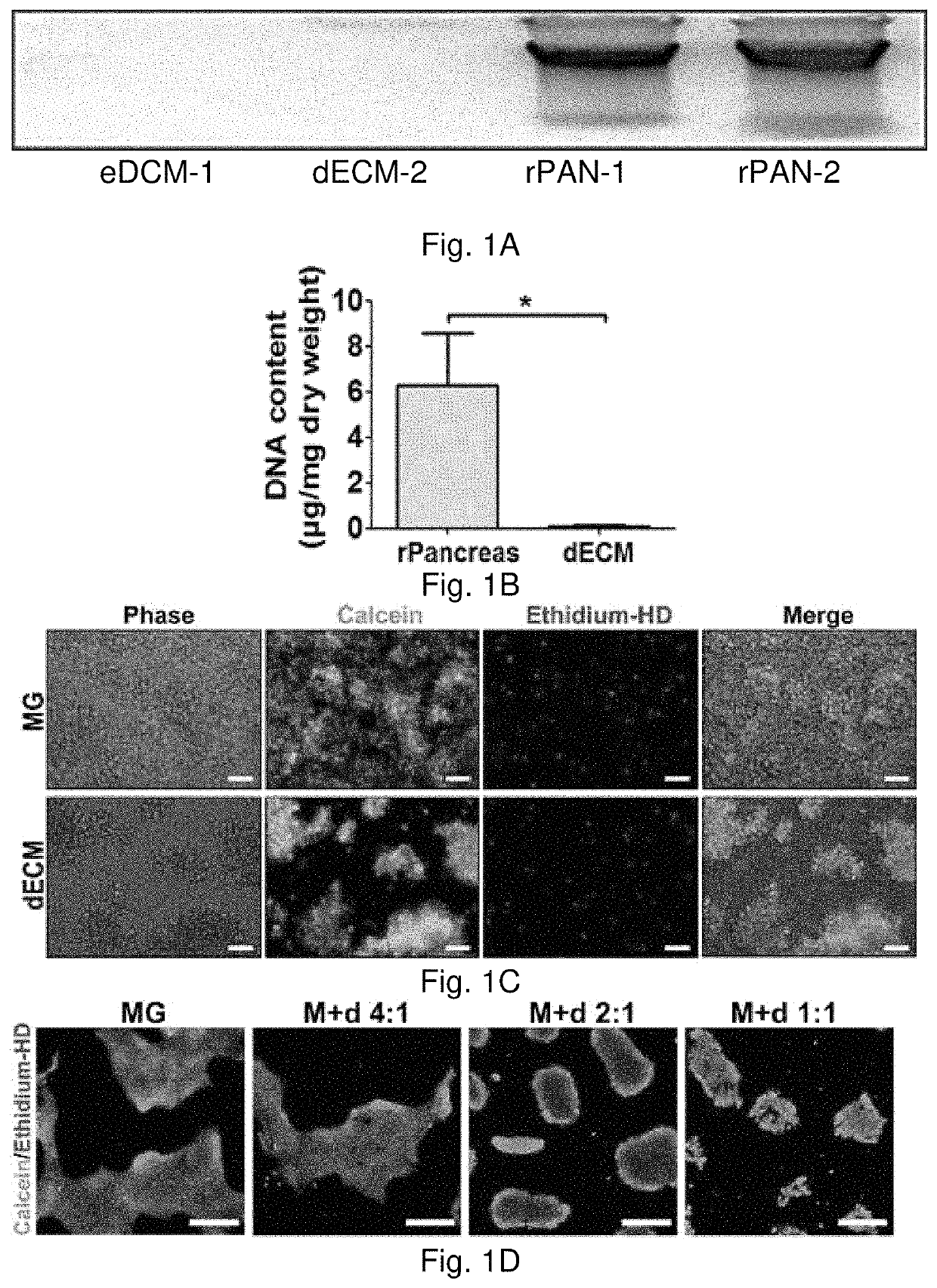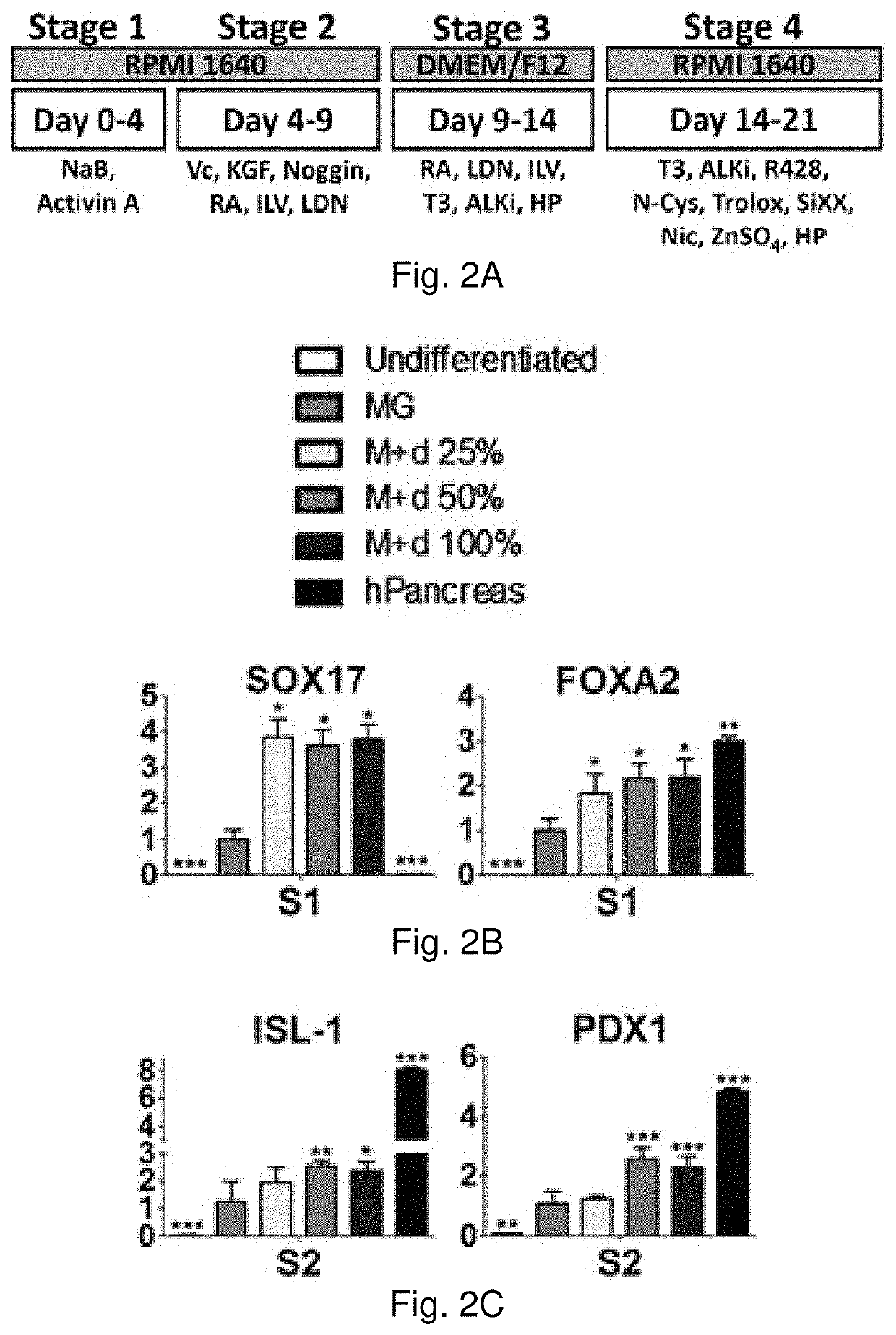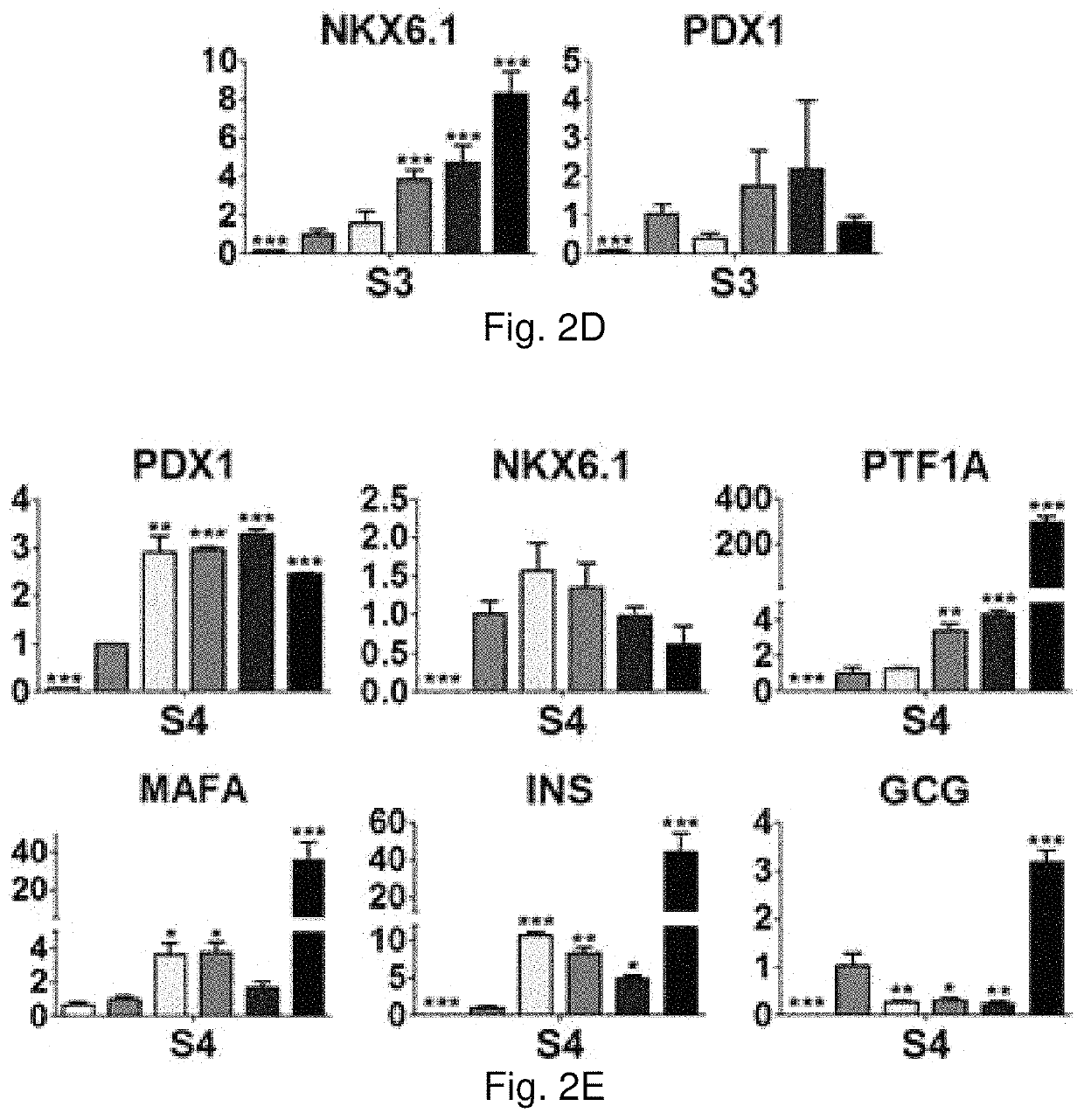Microenvironments for self-assembly of islet organoids from stem cells differentiation
a stem cell and microenvironment technology, applied in the field of microenvironments for self-assembly of stem cell organoids, can solve the problems of complex cellular behavior and difficult observation, and achieve the effects of promoting the maturation of stem cell-derived insulin-producing cells, reducing background noise, and reducing cell death
- Summary
- Abstract
- Description
- Claims
- Application Information
AI Technical Summary
Benefits of technology
Problems solved by technology
Method used
Image
Examples
example 1
[0091]Rat pancreas were cut into 3 mm thick slices, and treated repeatedly with deionized water and sodium chloride-ammonia hydroxide solution for four days. After rinse and lyophilization, total DNA content of dpECM was examined. dpECM was milled and reconstituted by pepsin-containing acetic acid and neutralized. One hour before seeding human induced pluripotent stem cells (iPSCs), six-well plates were coated with matrigel (MG) and varied concentrations of dpECM. MG coated plates serve as a control for comparison. To differentiate iPSCs into islet organoids, a novel stepwise differentiation protocol developed was used. Expression of pancreatic marker genes and proteins were examined by quantitative real-time PCR and flow cytometric analyses at the end of each stage of differentiation.
[0092]The dpECM procedure developed in this study enables the removal of approximately 99% of DNA from animal pancreas. At the end of stage I of differentiation, the expression of definitive endoderm m...
example 2
[0177]The feasibility of generating islet-like clusters from mouse embryonic stem cells (mESCs) within a collagen scaffold is demonstrated above. These cell clusters consisted of α, β, and δ cells and exhibited a characteristic mouse islet architecture that has a β cell core surrounded by α and δ cells. The clusters were capable of KATP channel dependent insulin secretion upon glucose challenge. No PP cells were detected in these cell clusters, distinct from adult islets.
[0178]Building upon this mESC work, full islet organoids (consisting of four subtypes of pancreatic endocrine cells) from human embryonic stem cells (hESCs) were developed within a biomimetic scaffold. The cytostructural analysis of these organoids revealed a typical architecture of human adult islets, comprising α, β, δ, and PP cells. Both β cells and non-β cells were mixed to form organoids that secrete insulin and C-peptide in response to glucose challenges. The insulin secretory granules were detected in these o...
PUM
| Property | Measurement | Unit |
|---|---|---|
| concentration | aaaaa | aaaaa |
| size | aaaaa | aaaaa |
| size | aaaaa | aaaaa |
Abstract
Description
Claims
Application Information
 Login to View More
Login to View More - R&D
- Intellectual Property
- Life Sciences
- Materials
- Tech Scout
- Unparalleled Data Quality
- Higher Quality Content
- 60% Fewer Hallucinations
Browse by: Latest US Patents, China's latest patents, Technical Efficacy Thesaurus, Application Domain, Technology Topic, Popular Technical Reports.
© 2025 PatSnap. All rights reserved.Legal|Privacy policy|Modern Slavery Act Transparency Statement|Sitemap|About US| Contact US: help@patsnap.com



